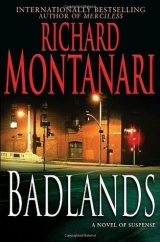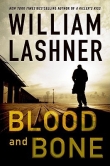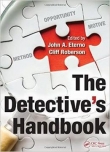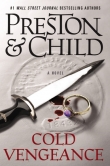
Текст книги "Badlands"
Автор книги: Richard Montanari
Соавторы: Richard Montanari
Жанры:
Триллеры
,сообщить о нарушении
Текущая страница: 22 (всего у книги 24 страниц)
EIGHTY-THREE
4:03 AM
THE BASEBALL FIELDS at Cecil B. Moore Avenue and North Eleventh Street were deserted. The mahogany cabinet sat at home plate. Its glossy surface shone in the light thrown from the sodium streetlamps.
Byrne was out of the car before Jessica could stop it.
“Goddamn it!”
Byrne vaulted across the field, reached the box first. There was no hesitation, no stopping him. He opened the box, stared inside. And froze.
Jessica and Bontrager made it across the field. Jessica saw what her partner was looking at. Inside was a girl, wearing an antique white satin dress. It looked to be a wedding gown from the 1920s or 1930s. A veil covered her face. The bodice of the dress was soaked with her blood.
Byrne reached in, put two fingers to the girl’s neck.
“She’s alive.”
EIGHTY-FOUR
4:16 AM
THE AMBULANCE SCREAMED off into the night. The girl had lost a lot of blood, but when the paramedics got her onto the gurney, her pulse was stronger, her blood pressure stable.
Jessica returned to the car, took the laptop out. She refreshed the killer’s GothOde page. “It’s up.” She clicked on the new file. Same red curtains.
PART SIX: THE BRIDAL CHAMBER
She started the video. It already had sixteen viewings.
“Behold the Bridal Chamber,” the killer said. He gestured to the mahogany cabinet, which was unquestionably empty, doors wide open. He closed the doors of the cabinet. “And behold the lovely Odette.” He held out his hand. A teenage girl walked onto the stage wearing the old bridal gown. She was pretty and thin, with strawberry-blond hair cascading out from beneath her white veil. He kissed her hand, sent her offstage. He then turned the closed cabinet around three times, stepped back, drew a chrome revolver from his pocket and fired it into the cabinet. A moment later, he opened the cabinet to reveal the bride inside.
He waved a hand, and the screen went black.
AT 4:20 Byrne’s cell phone rang. He checked the screen. Private number. He knew who it was even before he answered it. The communications unit had put “David Sinclair’s” number on autodial, calling it every twenty seconds. They had not, of course, gotten an answer.
Byrne flipped open his phone, remained silent.
“Time is passing, Detective,” the killer said.
“Would that were not true,” said Byrne, trying to keep his rage in check. “Youth is fleeting.”
“I never had a youth, I’m afraid.”
“Why don’t you stop down at the Roundhouse? We’ll trade sob stories. You and me.”
The man laughed. “Six Wonders down, one to go.”
“Well, that’s not exactly true.”
Silence. “What do you mean?”
“The Bridal Chamber. Looks like you were left at the altar.”
This time, a longer silence.
“We’re at the diamond now—this is the diamond, right? The parallelogram part of the tangram puzzle?”
“What about it?”
He didn’t deny it. They were right. “The girl is alive.”
“That’s not true. It can’t be true.”
“I don’t make the weather, man. Besides, why would I start lying to you now? It might sully our beautiful friendship.”
Silence again. Then the killer raised his voice. He was starting to crack. “It’s not true. It’s not. And wait until you see what’s next, Detective Byrne. You will never forget it. Never.”
The line went dead.
Byrne threw his phone halfway to center field. A few minutes later, Josh Bontrager jogged out to get it.
THEY HAD SIX of the tangram pieces—five triangles and one diamond. The killer had left the bodies of Caitlin O’Riordan, Elise Beausoleil, Monica Renzi, Katja Dovic, and a girl they had just identified as Patricia Sato—a runaway from Albany—in North Philadelphia parcels of land that were in the shape of a triangle. He had left his newest victim, as yet unidentified, still alive, on a baseball diamond. All that was left was the square. They had tried dozens of configurations with the pieces they had, trying to build the swan diagram. The horrifying truth was that just about every building in North Philly was either a rectangle or a square.
AT 4:28 Jessica’s phone rang. They were still at the Cecil B. Moore scene. The crime-scene unit was processing the cabinet. It was Tony Park calling.
“Anything on the canvass?” Jessica asked.
“Nothing yet,” Park said. “It’s late, it’s hot, we have a lot of pissed-off people named Swan or Swann in Philadelphia this morning.”
“They’ll get over it.”
“I do have something interesting on what that magician fellow found. Something about Cygne.”
“What about it?”
“There’s a Galerie Cygne,” Park said. “Spelled exactly the same way. It’s the only listing in the city with a name even close.”
“Where is it?”
“Twenty-fourth and Market.”
Tony Park gave her the address. Jessica clicked off, told Byrne. “I’m going to go check on this,” she said.
Byrne held up his handset. “Stay on channel.”
“You got it.”
EIGHTY-FIVE
4:30 AM
SWANN CARRIED the box. It was heavy. He had forgotten how heavy it could be.
They were lying to him. It was a trick. Their trick. Claire was dead. She was in the Bridal Chamber. They would pay for this.
“You have failed.”
“I have not.”
“Acceptance is not enough, Joseph.”
“It is not just acceptance. It is certainty.”
Just about everything was in place for his grand finale. They would forever remember him. He would find a niche in the hierarchy of all things magic, all things puzzling, all things inexplicable. Even Thoreau believed that human beings require mystery.
“People must believe the impossible.”
“They will believe.”
“All magic is mentalism, Joseph. All magic makes people believe. The effect is in the mind.”
He could no longer carry the box. He put it down, began to drag it.
“All magic is mentalism,” he repeated. “All magic.”
He got the box into position. He sat down next to it.
The effect is in the mind.
EIGHTY-SIX
4:55 AM
JESSICA PARKED ON Market Street. The facade of the Thirtieth Street train station loomed in the near distance, its lights reflected on the calm surface of the Schuylkill River.
She replayed the last video over and over in her mind. The Bridal Chamber. She thought of the way the girl looked in that antique dress, how frightened she had been. She thought of the blood. She had called the hospital on the way across town. The girl was being prepped for surgery.
Jessica was just about to get out of her car and enter the building when her phone rang. It was Byrne.
“What’s up?” Jessica asked.
“We have him.”
“We have him? What are you talking about? Where?”
“We got a call from the AV Unit two minutes ago. Three street cams saw someone dragging a big box across Nineteenth Street.”
“Where on Nineteenth?”
“Right at Logan Circle.”
Jessica realized the significance. “It’s his square in the tangram puzzle,” she said.
“It’s his square.”
When William Penn planned the development of Philadelphia in the 1600s, he designed five squares—one central square, with four others equidistant from the center. Today those squares are City Hall, Franklin Square, Rittenhouse Square, and Washington Square. The fifth square, located at the midway point between City Hall and the art museum, was originally called Northwest Square. Once a burial site and scene of public executions, the square was renamed Logan Circle in honor of William Penn’s secretary James Logan. Logan Circle, Logan Square—it went by both names.
More important, at the moment, was the fountain at the center.
Designed by Alexander Calder, it had a name of particular interest to the police right now.
Swann Memorial Fountain.
This is going to be spectacular. It will light up the night.
“Is he still there?” Jessica asked.
“Cams are locked on him. He’s sitting at the edge of the fountain.
Box is next to him. SWAT is getting into position right now.”
Special Weapons and Tactics, headquartered in East Division, generally needed a twenty-four-hour notice for an entry. Getting them to mount an operation on the fly was rare, but it spoke to the urgency of the situation.
“You said there’s a box?”
“Big box,” Byrne said. “Right next to him.”
“Bomb squad on scene?”
“Deploying now.”
“Where are we setting up?”
“Nineteenth and Cherry.”
Jessica looked at her watch. She hesitated for a moment, then said, “I’m on my way.”
Byrne knew the tone. He knew her. “Jess. Are you—” “I’ll meet you there.”
Before Byrne could say anything more, she folded her phone, and got out of the car.
EIGHTY-SEVEN
5:10 AM
LILLY HAD WAITED until Joseph Swann left her room. He had not said a word, but he had paced, seemed agitated.
He left a dress for her, a velvet dress on a hanger. It was deep scarlet. Lilly recognized it as the dress the woman was wearing in the photograph Karl Swann had shown her. She imagined she was to wear it. She imagined she, like the other girls in the videos, was supposed to play the part of his assistant, an assistant who did not survive the trick.
She checked the door. Locked, of course. She tried to open the panel in the wall, but it did not work. Had Joseph known she left the room? Did he know she found his father? Had he sealed off her exit?
She glanced around the room. There had to be a dozen candles burning.
She put on the dress.
EIGHTY-EIGHT
5:11 AM
GALERIE CYGNE WAS located in the Marketplace Design Center at Twenty-fourth and Market streets. It was a large building, overlooking the Schuylkill River, home to more than fifty exclusive showrooms offering antiques, building products, AV systems, lighting, and wall coverings.
Jessica buzzed the night security guard. She badged him, he let her in. He was in his late fifties, ex-PPD. His name was Rich Gardener. He knew Jessica’s father.
Cutting the cop dance short, Jessica got to the point. “What can you tell me about this Galerie Cygne?”
“Not much. Nice-looking stuff. Custom cabinetry, one of a kind furniture. Tables and dressers that cost what I make in a year. It’s one of the smaller showrooms here.”
“Can I see the place?”
Gardener squared his shoulders, then gestured to the elevators, looking pretty pumped about being back in the game. “Right this way, Detective.”
JESSICA AND GARDENER stood in the hallway in front of the long glass wall that was Galerie Cygne. The interior was immaculately clean. The space was sliced with spotlights, highlighting cabinets, armoires, chairs, tables.
“Do you know the owner?” Jessica asked.
“Never met him.”
“Have you ever seen him?”
“No. Sorry.”
“Do you have a home address for him?”
The man hesitated. “I know you’re on the job and all, but I have a job, too, right? I mean, I’ve run a few warrants in my time. Do you mind if I make a call?”
Jessica glanced at her watch. The team would be taking Logan Circle soon. She would be missed. “Please make it fast.”
TWO MINUTES LATER, down in the lobby, Gardener looked up from his computer monitor. “Believe it or not, all correspondence with the owner goes to a post office box.”
“There’s no home address or other business address?”
“No.”
“Is there a name at least?”
“No,” Gardener said. “There’s usually a page with emergency contact information, stuff like that. In case there’s a fire, flood, act of God. But, for some reason, it’s gone.”
“Gone.”
“As in erased. I know that there was an address here, because sometimes FedEx and UPS would have a delivery and the owner had to have it sent to his or her house.”
“You’re saying that the page has been deleted?”
“Yeah. But I’ve talked to one of the drivers who went out there once. Real horror-movie nut. Scared of his own shadow. Says the place is really spooky.”
“Spooky how?”
“Said it’s the old Coleridge place. I think they call it Faerwood or something. Said it’s haunted.”
“Where is this Faerwood?”
“No idea.”
Jessica pointed to the monitor. “Can we get on the Internet?”
Rich Gardener looked at his watch, over his shoulder, back. “We are not supposed to. But seeing as you’re Pete Giovanni’s daughter and all.”
JESSICA FOUND THE REFERENCE immediately on one of the wiki sites. Artemus Coleridge (1866–1908) was an engineer and a draftsman. He worked for the Pennsylvania Railroad. In 1908 he hanged himself from a roof beam at the huge North Philadelphia house he had built eight years earlier, a twenty-two-room Victorian mansion called Faerwood.
CLICK HERE TO SEE A PHOTOGRAPH OF FAERWOOD, the webpage teased.
Jessica clicked. The image ran ice through her veins.
She’d been there.
EIGHTY-NINE
5:20 AM
SWANN REMEMBERED A time when his father played a venue in West Texas. The Great Cygne had performed a close-up routine at a honky-tonk called Ruby Lee’s. When his father refused to reveal the secret of a card routine based on Dai Vernon’s Cutting the Aces, he had been taken out back, beaten, his entire act stolen out of the car.
Twenty minutes later, perhaps in drunken remorse, the three men who’d assaulted the Great Cygne came outside with food for the man’s young son. As his father lay unconscious in a dusty alley, Joseph ate chicken-fried steak and drank Coca Cola.
It had been this hot that night.
Swann put his hand on the box. Fire and water. Water and flame. There were many variations of the fire illusions. The cremation illusions. Some call the illusion Suttee, the term coming from the name of the goddess Sati who immolated herself because she could not stand living with her father’s humiliation over her husband Shiva.
Some illusionists called the effect She, a title inspired by a strange little book by H. Ryder Haggard.
The Great Cygne called it the Fire Grotto. The effect was similar to the Sub Trunk, but that was the original version. This version would be different.
Swann sat in the shadow of the box. The red clock ticked. It was time. He would open the box and begin the final illusion of what the world would know, for as long as history was recorded, as the Seven Wonders.
NINETY
5:25 AM
THE HOUSE SEEMED larger than it had in the daytime, more forbidding. Where the grounds had seemed merely unkempt in bright sunlight, they now seemed populated with specters, with hunkering apparitions in the darkness.
Jessica had printed out the photograph from the website. Faerwood, in 1908, was magnificent—sculpted hedges, a small well-tended orchard, even a waterfall. Now it was a ruin.
Jessica had her handset live, an earphone in her ear. The SWAT team had not yet moved in on Logan Circle. Any second now. The detectives and support personnel were assembled. Byrne had not yet called her.
She had turned off her headlights halfway up the winding driveway, cut the engine, drew her weapon, and approached the crumbling porch. For the second time in as many days.
“I remember now. Last year a pair of policemen came around.”
Jessica wondered how many places there were like this. Places hidden from view. Places where time had stopped. She put her ear to the front window. At first it was cold silence, then she heard music. Someone was home. Was she chasing a ghost, or was this the place of a monster? She rang the doorbell, stepped back, waited. No one answered. She shone her flashlight up the vine-covered wall. The sinister windows stared back. Next she tried the rusted iron knocker. Same result.
She rounded the house to the east, stepping through the tall brush, the high grass, skirting a small wooden gazebo. A multi-car garage was attached to the house. She stepped up to the doors, peered inside, saw a van, along with three late-model cars. One empty bay.
She continued around to the rear of the property. Crumbling stone benches squatted next to the path.
She looked at the back of the house, at the windows on the second floor. Half the windows were barred, even though there were no fire escapes. No way to get in.
They were not there to keep people from breaking in, she realized. They were there to there to keep people from breaking out.
A shadow danced behind one of the grimed windows. There was movement in one of the rooms.
Jessica stepped back, nearly stumbling over an ancient rusted sundial. She saw the curtains part. A figure emerged in the darkness. It looked to be a young girl.
Jessica got on her handset, hit the panic button. All PPD handsets were equipped with GPS, along with a little red button that, when activated, would call for every available cop in the division, along with their mothers.
Jessica could not wait. She looked around the immediate area, found a fist-sized rock, broke the window, reached inside, and unlocked the door.
She stepped into the house.
NINETY-ONE
5:30 AM
LOGAN CIRCLE WAS deserted, except for the lone figure sitting at the edge of the fountain, facing south, the large box next to him, like some strange tableau on Easter Island. The water pressure to the fountains had been cut. The lights were off. Byrne had grown up in Philly, had been to Logan Circle many times, starting with field trips to the art museum and the Franklin Institute as a child. Now the place looked like a Martian landscape, completely foreign to him. He had never seen it look so desolate, so vacant.
Sector cars and detective cars slowly approached from Vine Street, Race Street, North Nineteenth Street and Benjamin Franklin Parkway. All approaches to Logan Circle were blocked. Byrne was grateful for the time of night. If this was during the day, the traffic—and all the attendant problems of keeping people out of the way, and safe—would be myriad.
At 5:35 they got the go order.
Six SWAT officers approached the circle, AR-15 rifles raised. Even from a block away Byrne heard their commands to the suspect to get down on the ground. When the officers got within twenty feet or so, the man put his hands over his head, got down onto his knees. A few seconds later a pair of uniformed officers rushed in, handcuffed the man, and took him into custody.
This made no sense, Byrne thought. This was the Collector? This was their puzzle master? Byrne jogged up the block toward Logan Circle. Something was wrong. Before he reached the corner, Josh Bontrager raised him on the radio.
“It’s not him,” Bontrager said.
Byrne halted. “Say again?”
“It’s some homeless guy. He says a guy paid him to drag the box here. A couple of the uniforms know who this guy is. They’ve seen him around.”
Byrne looked through the binoculars. Protocol now called for the SWAT officers to clear the scene, and the bomb squad to investigate the suspicious package. Unless, of course, there was a young patrol officer on the landscape. An officer strikingly similar to the policeman Kevin Byrne had been more than twenty years earlier. At least attitude-wise. It was cowboy time. Or cowgirl time, as the case may be.
Through the glass Byrne saw Officer Maria Caruso roar onto the scene, rip off the top of the cardboard box, then kick it halfway across Logan Circle. Shredded newspaper flew. There was nothing—and no one—inside.
They’d been taken by the puzzle master.
It was then Byrne heard the call for backup go out. His partner’s call for help.
“Jess.”
NINETY-TWO
5:40 AM
SWANN OPENED THE BOX. The basement was hot and damp and close. He did not have a problem with confined spaces—he had been cured, forcibly, of this phobia at a tender young age.
The box had sat dormant for years. It had belonged to an Indian fakir, ostensibly, although Swann knew the man as Dennis Glassman, a slack-handed card man and part-time lawn-care consultant based in Reno, Nevada.
It was time for the Fire Grotto. The Seventh Wonder. With a twist, of course. This time the assistant would not get out of the cage.
Swann rolled the box to the center of the small stage. He adjusted his tie. Everything was arranged. Odette was upstairs. He had peered in on her. She was dressed in her lovely scarlet gown, just as he had planned.
He climbed the stairs to the third floor. The wall on the landing was activated by a key lock and a counterweight. He pushed aside the small painting, unlocked the door. It slid open. Beyond was a short, dark corridor leading to his father’s room. Swann knew that his father had gotten out of the room a few times over the past twenty years—Karl Swann thought this was a secret—and each time Joseph had tightened security.
He edged open the door to the Great Cygne’s foul lair. The old man was where he usually was, beneath the covers, sheets pulled up over his bony skull. Swann crossed the room, made sure the television was on. It was connected by a direct feed to the camera across from the stage in the basement.
It was time for Odette. Time for the Fire Grotto.
As Swann made his way through the maze, he considered how Faerwood had been built on a plot of land that had once been known as Prescott Square. He wondered if the police had arrived at Logan Circle yet. Logan Circle with its Swann Memorial Fountain.
Prescott Square, he thought.
The final piece of the tangram.








